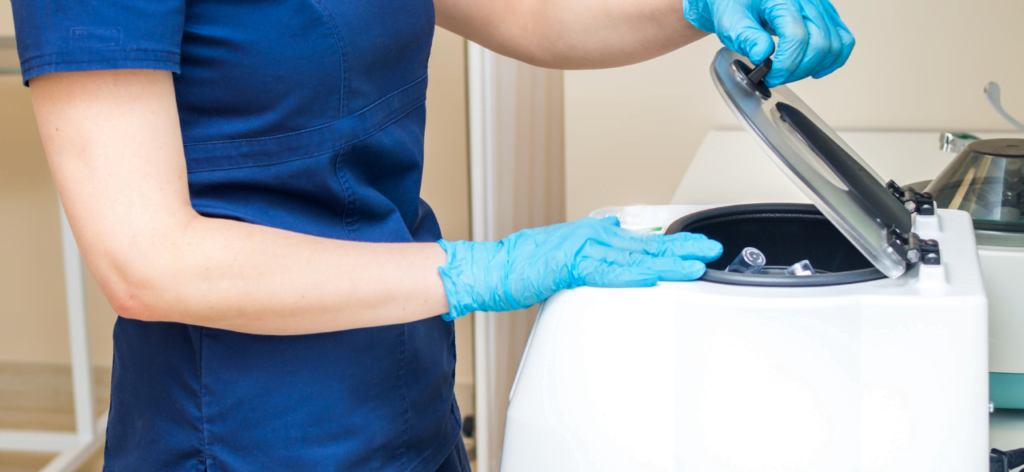Preimplantation diagnostics refers to procedures in which polar body nuclei are removed from oocytes or cells of embryos (blastomeres, trophectoderm) to test them for mutations or to evaluate their chromosomal complement.
Suppose a known monogenic disorder is carried by one or both parents. In that case, PGT-M may help determine whether the condition has been transmitted to the egg or embryo.
PGT-A describes testing for aneuploidy of the egg or embryo.
PGTA -SR describes testing for structural abnormalities of the chromosomes.
Testing
Preimplantation genetic testing can be performed on polar bodies taken from oocytes before and after fertilization (so-called pre-conception diagnostics), on blastomeres (on embryos in the cleavage stage), or trophectoderm biopsies (on blastocysts).
The most reliable and gentle examination of the embryo is the blastocyst biopsy. The reason is that an embryo at this stage of development has around 200 cells, and only 5-10 of the cells are taken, which in the future will not form the embryo itself, but the placenta. Studies have shown that the developmental potential of a biopsied embryo at this stage is comparable to non-biopsy embryos.
Another advantage of biopsy at the blastocyst stage, compared to the other tests, is the lower rate of false positives. This means that biopsies at earlier stages of development often result in embryos being misclassified as abnormal and never transferred.
Overall, blastocyst biopsy is currently the most reliable and least traumatic option.
Preimplantation genetic testing for monogenetic disorders (PGT-M).
Testing is indicated in couples at risk of passing on a specific genetic abnormality to their offspring.
The risk of transmission is 50% in carriers of autosomal dominant disorders (e.g., Marfan syndrome), 25% in carriers of autosomal recessive diseases (e.g., cystic fibrosis), and 25% (half of the male embryos) in female carriers of X-linked disorders (e.g., hemophilia A).
This screening offers couples who are carriers of severe genetic disorders the opportunity to have a healthy child without the practical and ethical problems associated with terminating an affected pregnancy. However, careful counseling is required, which must include the following:
- The possibility of misdiagnosis or inconclusive results.
- The possibility is that chances of success are lower than if PGT-M is not performed due to embryo trauma and the fewer embryos available after excluding abnormal embryos.
- The need for conventional prenatal diagnosis to confirm the accuracy of PGT-M.
Preimplantation genetic testing for aneuploidy (PGT-A).
Aneuploidy is ordinary in human embryos and is usually due to meiotic errors in the egg, which become more frequent with age. Although aneuploidy is more common in morphologically abnormal embryos, embryos with normal morphology and developmental course can also be aneuploid.
While concerns about diagnostic accuracy are fair, many see this approach to embryo selection to shorten the time to live birth and increase the live birth rate per transfer, at least in selected populations.
Therefore, patients who might benefit from PGT-A are:
Advanced reproductive age and good oocyte reserve.
Example: A woman who is 40 years old and capable of generating multiple blastocysts on day 5. Here, testing could spare the patient multiple potential unsuccessful embryo transfers and/or early miscarriages associated with embryo abnormalities in this age category.
Women with a history of multiple miscarriages.
After extensive diagnosis and exclusion of all known causes for the miscarriages, this testing is not only used psychologically. Still, it can also reveal an unaffected embryo with relatively high sensitivity and specificity for the next transfer.
The techniques used for PGT-A are evolving rapidly. The next decade will show whether these developments will further improve the diagnostic accuracy of PGT-A.
The legal situation in Greece
Performing a PGT-A examination in Greece is uncomplicated and less expensive than in other European countries. It is always decided after medical evaluation whether it is indicated in each case.
For more information and to check if this examination suits you, please do not hesitate to contact us.
1 Practice Committee of Society for Assisted Reproductive Technology; Practice Committee of American Society of Reproductive Medicine, fertile sterile 90:S136,2008
2 Scott, Upham, Forman, Cleavage-stage biopsy significantly impairs human embryonic implantation potential while blastocyst biopsy does not
3 De Vos, Staessen C, Impact of cleavage-stage embryo biopsy in view of PGD on human blastocyst implantation
4 Menezo, Bellec, Embryo selection by IVF, co-culture and transfer at the blastocyst stage in case of translocation







